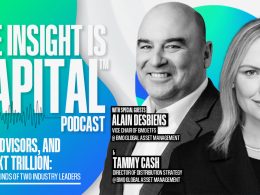by Steve Lecompte, CXO Advisory Group
In the preface to the 2015 Third Edition of Irrational Exuberance, author Robert Shiller states: “…evidence of bubbles has accelerated since the [2007-2009 world financial] crisis. Valuations in the stock and bond markets have reached high levels in the United States and some other countries, and valuations in the housing market have been increasing rapidly in many countries. …The bubbly and apparently unstable situation warrants come concern, although not yet generally as extreme as when the first edition of this book issued a warning about the overpriced and vulnerable stock market…, or when the second edition of this book issued a warning about the overpriced and vulnerable housing market…” Based on his judgement and considerable cited research, he concludes that:
From Chapter 1, “The Stock Market in Historical Perspective” (Page 10): “Lacking answers from our wisest experts, many are inclined to turn to the wisdom of the markets to answer our questions, to use the turns of the stock market as fortune tellers use tea leaves. But before we begin assuming that the market is revealing some truth about this new era, it behooves us to reflect on the real determinants of market moves… Many of these real determinants are in our minds.”
From Chapter 2, “The Bond Market in Historical Perspective” (Page 17): “There must be some hard-to-pin-down cultural factors driving people to invest in bonds at a time when their yield is very low or negative and the stock market has been soaring. Some of the same precipitating factors for the stock market and the housing market booms…might apply somewhat to the bond market. Also, falling bond yields have produced capital gains for bond investors, making bonds look successful… There is indeed reason to be concerned about the…end to this decades-long downtrend in real interest rates, and of a corresponding drop in long-term bond prices.”
From Chapter 3, “The Real Estate Market in Historical Perspective” (Page 35): “The increasingly large role of speculative markets for homes…has fundamentally changed our lives. The price activity that was once very local and confined to such events as the building of highways, canals, and railroads has become national and international, and it is now connected to popular stories of new economic eras. The changing behavior of home prices is a sign of changing public impressions of the value of property, a heightening of attention to speculative price movements.”
From Chapter 4, “Precipitating Factors: The Internet, the Capitalist Explosion, and Other Events” (Page 62): “After the 2007-2009 stock market crash, stock markets around the world began another dizzy climb upward. …The new precipitating factors this time had to do particularly with the decline in fears of an acute financial crisis and with the government policies to try to cure it, as well as with some new impressions of the technological revolution and the insecurity of our jobs.”
From Chapter 5, “Amplification Mechanisms: Naturally Occurring Ponzi Processes” (Page 97): “There are many precipitating factors ultimately causing irrational exuberance,…and the effects of these causes can be amplified by a feedback loop, a speculative bubble… As prices continue to rise, the level of exuberance is enhanced by the price rise itself.”
From Chapter 6, “The News Media” (Pages 121-122): “…the news media are fundamental propagators of speculative price movements through their efforts to make news interesting to their audience. They sometimes strive to enhance such interest by attaching news stories to price movements that the public has already observed, thereby enhancing the salience of these movements and focusing greater attention on them. Or they may remind the public of past market episodes, or of the likely trading strategies of others. Thus, the media can sometimes foster stronger feedback from past price changes to further prices changes, and they can also foster another sequence of events,…an attention cascade.”
From Chapter 7, “New Era Economic Thinking” (Pages 123, 126): “Speculative market expansions have often been associated with popular perceptions that the future is brighter or less uncertain than it was in the past. The term new era has periodically been used to describe these times. …Conventional wisdom interprets the stock market as reacting to new era theories. In fact, it appears that the stock market often creates new era theories, as reporters scramble to justify stock market price moves. The situation reminds one of the Ouija board, where players are encouraged to interpret the meaning of movements in their trembling hands and to distill forecasts from them.”
From Chapter 8, “New Eras and Bubbles around the World” (Page 150): “Large stock market moves…have also occurred in many countries over the years… These suggest that speculative bubbles…are in fact commonplace. …prices in these countries have tended to reverse after making exceptionally large increases, as one would expect if bubbles were common among them.”
From Chapter 9, “Psychological Anchors for the Market” (Pages 166, 173): “Two kinds of psychological anchors will be considered here: quantitative anchors, which themselves give [numerical] indications for the appropriate levels of the market…, and moral anchors, which operate by determining the strength of the reason that compels people to buy stocks, a reason that they must weigh against their other uses for the wealth they have already (of could have) invested in the market. …we must also account for the ability of these anchors to let loose occasionally–sometimes suddenly.”
From Chapter 10, “Herd Behavior and Epidemics” (Pages 177-178, 187): “Even completely rational people can participate in herd behavior when they take into account the judgments of others, and even if they know that everyone else is behaving in a herd-like manner. The behavior, although individually rational, produces group behavior that is…irrational. …Word-of-mouth communications, either positive or negative, are an essential part of the propagation of speculative bubbles, and the word-of-mouth potential of any event must be weighed in judging the likelihood of that event to lead to a speculative bubble.”
From Chapter 11, “Efficient Markets, Random Walks, and Bubbles” (Page 199): “…I see no reason to doubt the thesis that smarter and more hard-working people will, in the long run, tend to do better at investing.”
From Chapter 12, “Investor Learning–and Unlearning” (Pages 221-222): “…market events associated with the 2007-2009 financial crisis caused investors to unlearn the ‘fact’ that stocks are the ‘best investment.’ As high valuations reappear in subsequent peaks, the will relearn this ‘fact’ again. Much of this is not learning at all, but a process of reassessing intuitive ideas about the future based on recent experience, as part of a bubble feedback. …The sense that we are all suddenly learning important facts and have arrived at a new enlightenment has appeared so many times in history that it may be regarded as a predictable component of irrational exuberance.”
From Chapter 13, “Speculative Volatility in a Free Society” (Page 225): “The markets have been high because of the combined effect of indifferent thinking by millions of people , very few of whom have felt the need to perform careful research on long-term investment value, and who are motivated substantially by their emotions, random attentions, and perceptions of conventional wisdom. Their all-too-human behavior has been heavily influenced by new media that are interested in attracting viewers or readers, with limited incentive to discipline their viewers or readers with the type of quantitative analysis that might give them a correct impression of fundamental value.”
In summary, investors may find Irrational Exuberance an interesting discussion of sources and extents of bubble formation in asset markets.
Cautions regarding conclusions include:
- The arguments in the book are largely conceptual rather than actionable. While there are suggestive statistics, there are no tests of strategies for exploiting/avoiding market bubbles. The author’s essential belief seems to be that market behaviors are not reliable enough for straightforward harvesting of irrational exuberance.
- As quoted from the preface above, the author portrays current (October 2014) valuation issues as less extreme than those featured in prior editions of the book.
- Much of the material in the book, of course, appeared in prior versions.
Copyright © CXO Advisory Group















